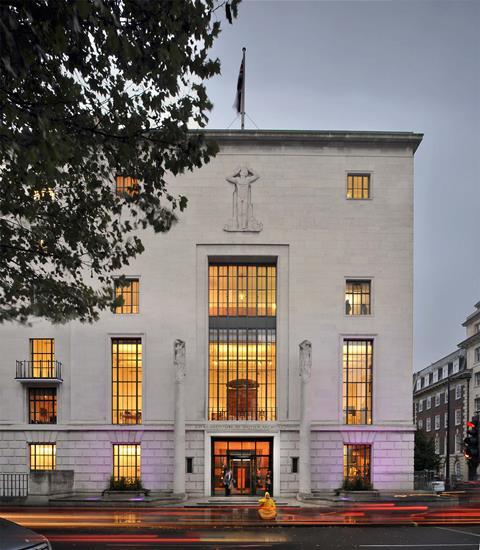Planning application hold-ups and insurance cost hikes take gloss off practicesŌĆÖ growing workloads
Logjams in planning departments are delaying projects by six months or more, according to a third of architects who responded to the latest RIBA Future Trends survey.
Nearly 80% of practices reported projects being delayed by hold-ups in the processing of planning applications, with 39% reporting projects being delayed by up to a month and 60% finding schemes delayed by between one and six months.
Seven per cent said the problems were so bad that they had seen projects abandoned altogether.
Snarl-ups in planning departments were not the only issue plaguing architects, according to this and other recent surveys.
Many practices continue to highlight ŌĆ£significant challengesŌĆØ in obtaining affordable and suitably comprehensive professional indemnity insurance, and ongoing challenges around product availability and costs.

Some also added that site labour and practice staffing levels were being affected by covid-19 infections and isolations.
Others are beginning to report difficulties in recruiting staff, with a suggestion that this has been exacerbated by the furlough scheme serving to dampen staff movement.
Adrian Malleson, the RIBAŌĆÖs head of economic research and analysis, said it was clear that there were significant issues.
He said: ŌĆ£The RIBA has been actively lobbying the government around planning delays. There have been some useful reforms including digitisation that have come about as a result, but we do need to see planning departments fully resourced to deal with this ongoing backlog.
ŌĆ£The RIBA is having regular conversations with MHCLG, the Arb and politicians to highlight the urgent need for action to address issues in the professional indemnity assurance market. The rise in cost combined with the reduction in the scope of coverage is deeply concerning. We will use the upcoming debates on the ║├╔½Ž╚╔·TV Safety Bill to push the government to look at options for reform.ŌĆØ
It wasnŌĆÖt all bad news, with the overall for July remaining strongly in positive territory, returning a balance figure of +27.
While this was a four-point decrease on JuneŌĆÖs results, architects remained very positive about future workloads, while actual workloads were 12% up on a year ago.
Overall 36% of practices said they expected workloads to grow in the coming three months, 55% expect them to remain the same, and just 9% expect them to decrease.
Workloads are expected to increase in three of four sectors - private housing, commercial and the public sector - with pessimism about future work only apparent in the community sector.
All regions continue to expect workloads to increase in the next three months, as do all practice sizes.
Private housing continued to lead the workload recovery, with a balance figure up one point to +28, while the commercial sector posted a balance figure of +11 down two points from JuneŌĆÖs figure of +13.
With a balance figure in July of +2, expectations about future work in the public sector remain positive, but only just. The community sector remains in negative territory, posting a balance figure of -3. The sector has returned a negative or zero balance figure for 17 successive months.
Once again, all regions expected workloads to grow over the next three months, but optimism in London has fallen, with a balance figure of +17, down 11 points from JuneŌĆÖs figure of +28. Despite this, it was the fifth month in a row that the capital has reported an expectation of increasing workloads.
In contrast to London, optimism in the south of England rose sharply this month, with a balance figure of +33, an increase of 16 points from last monthŌĆÖs figure of +17.
The Midlands & East Anglia held steady at +27, down just one point from June. Confidence in the north of England remained high but moderated this month, with a balance figure of +36, down from +49 in June. Wales & the West at +28 also saw optimism dip, with a fall from +45 in June.



























No comments yet